27.6 Steroids
In addition to fats, phospholipids, eicosanoids, and terpenoids, the lipid extracts of plants and animals also contain steroids, molecules that are derived from the triterpenoid lanosterol (Figure 27.7) and whose structures are based on a tetracyclic ring system. The four rings are designated A, B, C, and D, beginning at the lower left. The three 6-membered rings (A, B, and C) adopt chair conformations but are prevented by their rigid geometry from undergoing the usual cyclohexane ring-flips (Section 4.6).
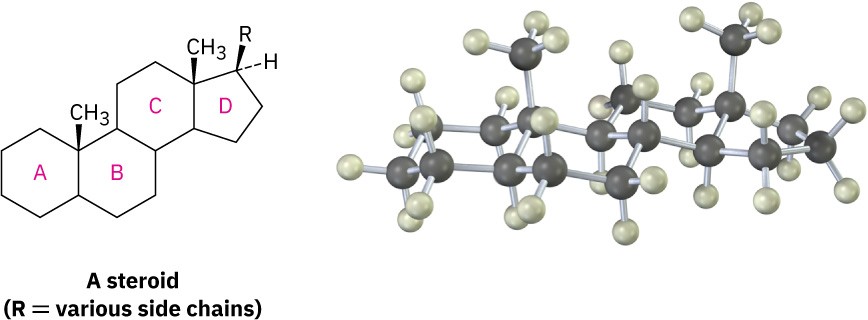
Two cyclohexane rings can be joined in either a cis or a trans manner. With cis fusion to give cis-decalin, both groups at the ring-junction positions (the angular groups) are on the same side of the two rings. With trans fusion to give trans-decalin, the groups at the ring junctions are on opposite sides.
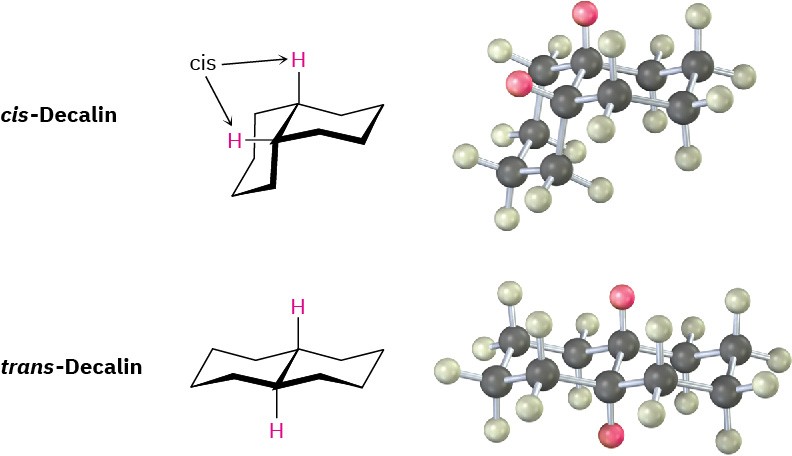
As shown in Figure 27.12, steroids can have either a cis or a trans fusion of the A and B rings, but the other ring fusions (B–C and C–D) are usually trans.
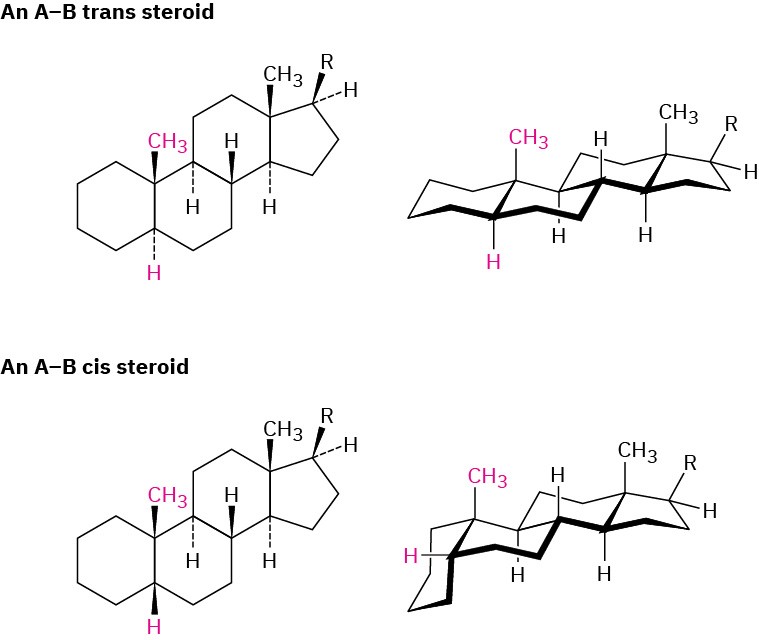
Figure 27.12 Steroid conformations. The three 6-membered rings have chair conformations but are unable to undergo ring-flips. The A and B rings can be either cis- fused or trans-fused.
Substituent groups on the steroid ring system can be either axial or equatorial. As with simple cyclohexanes, equatorial substitution is generally more favorable than axial substitution for steric reasons. The hydroxyl group of cholesterol, for example, has the more stable equatorial orientation.

Problem 27-8
Draw the following molecules in chair conformations, and tell whether the ring substituents are axial or equatorial:
(a)

(b)
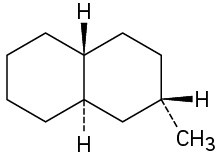
Problem 27-9
Lithocholic acid is an A–B cis steroid found in human bile. Draw lithocholic acid showing chair conformations, as in Figure 27.12, and tell whether the hydroxyl group at C3 is axial or equatorial.
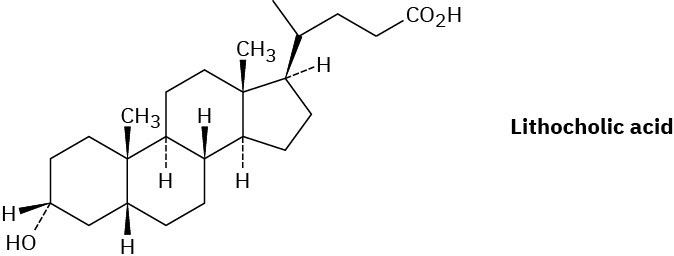
Steroid Hormones
In humans, most steroids function as hormones, chemical messengers that are secreted by endocrine glands and carried through the bloodstream to target tissues. There are two main classes of steroid hormones: the sex hormones, which control maturation, tissue growth, and reproduction, and the adrenocortical hormones, which regulate a variety of metabolic processes.
Sex Hormones
Testosterone and androsterone are the two most important male sex hormones, or androgens. Androgens are responsible for the development of male secondary sex characteristics during puberty and for promoting tissue and muscle growth. Both are synthesized in the testes from cholesterol. Androstenedione is another minor hormone that has received particular attention because of its use by prominent athletes.

Estrone and estradiol are the two most important female sex hormones, or estrogens. Synthesized in the ovaries from testosterone, estrogenic hormones are responsible for the development of female secondary sex characteristics and for regulation of the menstrual cycle. Note that both have a benzene-like aromatic A ring. In addition, another kind of sex
hormone called a progestin is essential in preparing the uterus for implantation of a fertilized ovum during pregnancy. Progesterone is the most important progestin.

Adrenocortical Hormones
Adrenocortical steroids are secreted by the adrenal glands, small organs located near the upper end of each kidney. There are two types of adrenocortical steroids, called mineralocorticoids and glucocorticoids. Mineralocorticoids, such as aldosterone, control tissue swelling by regulating cellular salt balance between Na+ and K+. Glucocorticoids, such as hydrocortisone, are involved in the regulation of glucose metabolism and in the control of inflammation. Glucocorticoid ointments are widely used to bring down the swelling from exposure to poison oak or poison ivy.
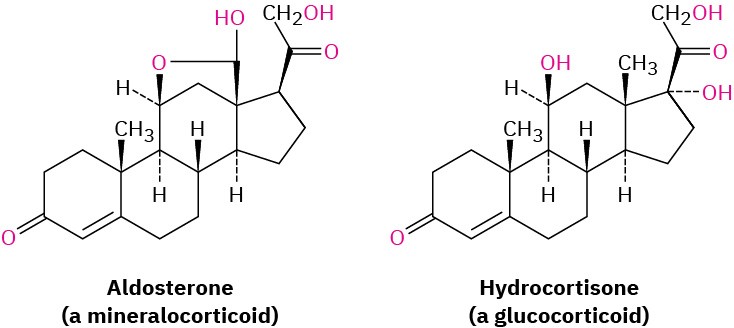
Synthetic Steroids
In addition to the hundreds of steroids isolated from plants and animals, many more have been synthesized in pharmaceutical laboratories in the search for new drugs. Among the best-known synthetic steroids are oral contraceptives and anabolic agents. Most birth control pills are a mixture of two compounds, a synthetic estrogen, such as ethynylestradiol, and a synthetic progestin, such as norethindrone. Anabolic steroids, such as methandrostenolone (Dianabol), are synthetic androgens that mimic the tissue-building effects of natural testosterone.


